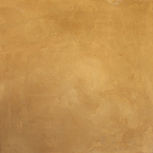
Sanctuary School & Studio
Welcome to our School & Studio! Where you can Learn "how It's Done" and pick out options via our studio below within the sub service you have selected to view:
-
School: Knowledge on how the sub-service is done.
-
Studio: Options on all materials/colors for selected sub-service.
What Is Stucco?
- Stucco is a popular exterior finish for homes in Orange County, prized for its durability, versatility, and weather resistance. This cement-based plaster, typically composed of Portland cement, sand, lime, and water, is applied wet and then hardens to form a solid, protective layer on your home's exterior walls. It's particularly well-suited for the Southern California climate, as it can withstand intense sunlight, heat, and occasional rain. Stucco can be applied in various ways to achieve different textures, from smooth and sleek to rough and textured. It can also be tinted or painted in a wide range of colors to complement your home's architectural style, whether it's a Spanish Colonial in San Clemente or a contemporary home in Newport Beach. Properly applied stucco can last for decades, providing a low-maintenance and attractive finish for your Orange County home.

1
School
Our official "How It's Done" section to help educate our clients to understand our industry leading installation process!
Course: How is stucco applied?
Process - Exterior Stucco Application
Discover our step by step guide on how we bring your renovation projects to life. Unless otherwise stated in your contract, all installations pertaining to Stucco are performed in the exact outlined method!


Phase 1: Surface Preparation and Sheathing Evaluation
-
This initial phase focuses on preparing the exterior wall surface for optimal stucco adhesion. The existing wall structure is thoroughly evaluated. This may involve inspecting existing sheathing (typically plywood or OSB) for damage or deterioration. However, some homes are constructed with open framing, consisting of 2x4 studs with metal lath (sometimes referred to as “chicken wire”) directly attached. In these cases, the framing itself is inspected for structural integrity. Any necessary repairs or replacements are performed to establish a sound base. A weather-resistant barrier (WRB), such as building paper or a synthetic membrane, is then applied to protect the framing from moisture intrusion. Proper overlapping and sealing around windows and other penetrations are crucial.
-
Insulation Considerations: If the wall is open framed or if existing sheathing is being removed, this is an opportune time to assess and potentially upgrade the wall insulation. We can discuss insulation options with you, such as fiberglass batts, spray foam, or rigid foam boards, and perform the necessary installation before proceeding with the stucco application. This can significantly improve energy efficiency and comfort.
Click Here to view our Wall Insulation services (COMING SOON)

Phase 2: Metal Lath Installation and Reinforcement
-
This phase establishes the reinforced base for the stucco system. For walls with existing sheathing, galvanized metal lath, a wire mesh material, is installed over the WRB. For open framed walls, the existing metal lath is inspected for integrity; if it is damaged or inadequate, it is replaced. For either wall type, secure fastening to the framing with appropriate fasteners, along with proper overlapping at seams and corners, is essential. The specific type of lath used (e.g., woven wire or expanded metal) is determined based on project requirements. This reinforcement provides structural integrity and minimizes the risk of cracking. Corner beads and casing beads are also installed at this stage to create clean lines and protect edges.

Phase 3: Scratch Coat Application and Preparation
-
The scratch coat is the first stucco layer applied to the metal lath. A precisely mixed mortar of cement, sand, and water is troweled onto the lath, ensuring thorough embedment within the mesh. The surface is then “scratched” with a specialized tool to create a mechanical key for subsequent coats. This process enhances inter-layer adhesion. The scratch coat is then allowed to cure for a specified period, generally 24-48 hours.

Phase 4: Brown Coat Application and Leveling
-
The brown coat, the second stucco layer, is applied over the cured scratch coat. This thicker layer establishes a level and uniform surface for the final finish. A similar mortar mix to the scratch coat is used, sometimes with adjusted sand ratios. The brown coat is applied using trowels and carefully leveled and floated to achieve the desired plane. This coat requires a curing period, typically 7-10 days, depending on environmental conditions.

Phase 5: Finish Coat Application and Texturing
-
The final phase involves applying the finish coat, which provides the desired aesthetic texture and color. A range of finish options is available, including smooth, textured, and custom finishes. This coat is applied in a thin layer over the cured brown coat. The chosen texture is achieved using various techniques and tools, such as trowels, sponges, or sprayers. We consult closely with clients to select a finish that complements the architectural style of their home.

2
Studio
Our Official Studio will guide you through all options we carry within the selected category to expertly guide you in your decision making process!
Studio Display: Our Selection Of Stucco Options!
Let's Pick Out Your Home's Stucco!
With stucco you have a few options in terms of texture and finished look:
1. Textured Stucco Finish
2. Smooth Stucco Finish
All finishes and textures can be painted if standard stucco color is not desired. Please select the button below to be taken to our PAINT FINISHES section to select a color!
Textured Stucco Finish
A textured or rough stucco is achieved during the final coat application by using a trowel or brush to manipulate the wet stucco. After applying the base coat and allowing it to cure, a layer of finish coat is spread evenly over the surface. The applicator then creates by dragging a brush or trowel across surface, forming patterns or roughness as desired. This technique not only adds visual interest but also enhances the durability of the stucco finish.
Sample Close-Up Textures

Semi-Rough

Standard Rough

Smooth Stucco Finish
A smooth stucco finish is achieved during the final coat application by carefully applying a thin layer of stucco mix to the surface. This layer is spread evenly using a trow, ensuring that any imperfections are filled in. After the initial application, the surface is then smoothed out by using a float or trowel in a consistent motion, which helps to eliminate any lines or textures. Finally, the finish is allowed to cure properly, resulting in a sleek and polished appearance.
Sample Close-Up Textures

Standard Smooth Stucco

Spanish Smooth Stucco

%20whi.png)

